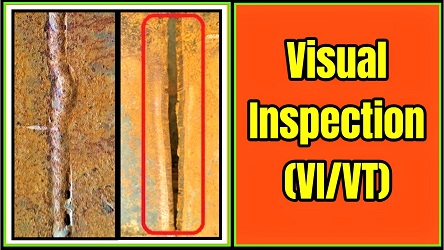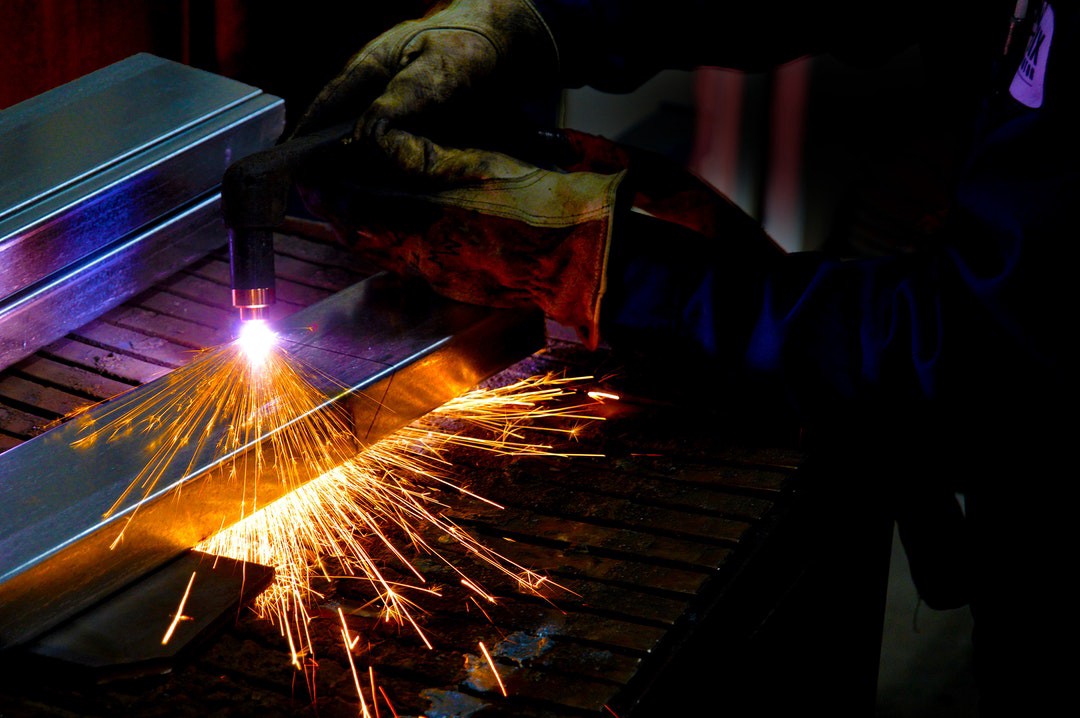Checking Out the Significance of Welding Evaluation in Industrial Applications: Securing Versus Failings and Enhancing Long Life
Welding evaluation works as a crucial line of defense in industrial applications, guaranteeing the structural integrity and integrity of welded components. By systematically recognizing defects such as porosity and incomplete fusion, assessments not only avoid failures yet likewise prolong the life expectancy of crucial assets. Complying with sector requirements improves both safety and functional performance; nonetheless, the implications of ignoring these techniques can be extreme. As we check out the diverse benefits of routine inspections, it becomes noticeable that recognizing these characteristics is not simply a matter of conformity but a strategic critical for longevity and threat reduction (Welding Inspection Gilbert Arizona).
Function of Welding Assessment
Welding assessment functions as an important protect in industrial applications, making sure that bonded frameworks satisfy specified requirements of quality and safety and security. This procedure includes an organized assessment of welds to confirm their stability, stamina, and conformity with established codes and specifications. The duty of welding examination is complex, incorporating both aesthetic evaluations and non-destructive testing approaches, which may include ultrasonic, radiographic, or magnetic particle screening.

Furthermore, welding inspection plays a crucial role in regulatory conformity. Numerous markets are regulated by rigorous security criteria, requiring comprehensive documentation and recognition of welding techniques. By keeping these records, companies can show adherence to safety and security regulations, thus fostering count on among clients and stakeholders. Eventually, the duty of welding inspection is essential in promoting safety and security, enhancing efficiency, and protecting investments in commercial framework.
Usual Welding Defects

One of the most widespread flaws is porosity, characterized by little gas pockets caught within the weld steel. This happens as a result of impurities or incorrect securing gas, endangering the weld's toughness. Another substantial flaw is insufficient blend, where the weld metal stops working to bond appropriately with the base product, possibly causing structural weaknesses.
Cracks can likewise establish throughout or after the welding procedure, usually credited to thermal stress and anxieties or incorrect air conditioning rates. In addition, undercutting, where the base metal is worn down along the weld bead, can weaken the joint and is often created by excessive warm input or incorrect technique.
Furthermore, absence of penetration occurs when the weld steel does not get to the root of the joint, bring about poor stamina. Understanding these common problems is crucial for assessors and welders alike to guarantee that bonded frameworks satisfy security and efficiency criteria, inevitably avoiding prospective failures in industrial applications.
Advantages of Normal Assessments
Routine assessments function as a crucial secure in ensuring the dependability and longevity of bonded structures. These evaluations identify potential problems and weaknesses that may endanger the stability of welds, allowing for timely remediation before concerns escalate. By implementing an organized inspection routine, companies can significantly reduce the threat of catastrophic failings that may bring about pricey downtime, equipment substitute, or perhaps mishaps.
Moreover, regular inspections add to improved quality control throughout the welding process. By sticking to a regular inspection routine, companies can guarantee that their welding practices meet recognized top quality standards and finest methods. This not only promotes a society of accountability however also motivates continuous enhancement among welding workers.
On top of that, normal evaluations assist in better maintenance preparation. By recognizing deterioration early, organizations can purposefully arrange replacements and repairs, lessening interruption to operations. This proactive method inevitably results in extensive asset life-span and enhanced overall efficiency.
Finally, a dedication to normal evaluations can enhance a business's credibility in the market. Stakeholders and customers progressively value companies that prioritize security and quality, thus boosting depend on and potentially bring about increased service opportunities.
Industry Requirements and Laws
Adhering to industry requirements and guidelines is a fundamental aspect of welding assessment that complements the advantages of regular examinations. These requirements, established by organizations such as the American Welding Society (AWS) and the American Society of Mechanical Engineers (ASME), give a structure for best practices in welding processes, materials, and inspection techniques. Conformity with these guidelines makes certain that welds meet the required quality and safety standards, significantly lowering the danger of architectural failures.
Regulative bodies like the Occupational Safety And Security and Health Management (OSHA) better impose standards that safeguard employees and the setting throughout welding operations. By adhering to these developed standards, markets can boost the integrity of their frameworks and elements, ensuring they perform as planned under different operational problems.
Moreover, adherence to market standards fosters consistency in quality assurance, assisting in smoother interaction amongst stakeholders and governing firms. This placement not only minimizes responsibility dangers yet likewise enhances the Go Here integrity of companies in open markets. Eventually, conformity with welding criteria and regulations is not simply a legal commitment; it is an essential investment in safety and security, performance, and long-term operational success.
Future Trends in Welding Evaluation
As sectors proceed to develop, the future of welding examination is poised to incorporate innovative modern technologies that boost precision and performance. Among the most significant fads is the adoption of automation and robotics in assessment procedures. Automated systems can carry out assessments rapidly, minimizing human error and raising throughput in making atmospheres.
Additionally, the assimilation anonymous of synthetic knowledge (AI) and artificial intelligence formulas will certainly enable predictive analytics, permitting real-time analyses and positive upkeep (Welding Inspection Gilbert Arizona). By examining data from previous examinations, these technologies can recognize patterns that might show possible failures, thereby expanding the life expectancy of welded components

Additionally, the trend in the direction of digitalization will certainly lead to boosted data management systems that help with far better monitoring, reporting, and conformity with sector criteria. In summary, the future of welding examination is characterized by technical improvements that guarantee to substantially boost reliability, safety and security, and operational performance in numerous industrial applications.
Final Thought
In final thought, welding evaluation serves a crucial function in guaranteeing the honesty and durability of bonded frameworks across numerous industrial applications. By determining problems such as he said porosity and incomplete combination, routine assessments play a substantial function in risk mitigation and quality guarantee. Adherence to market requirements and laws additionally boosts operational safety and dependability. As innovations in innovation remain to advance, the future of welding inspection assures increased precision and efficiency, inevitably adding to the long life of vital infrastructures.
Welding evaluation serves as a critical line of defense in commercial applications, making sure the structural stability and dependability of welded components.Welding examination offers as a crucial safeguard in commercial applications, ensuring that bonded frameworks fulfill specified standards of top quality and safety and security - Welding Inspection Gilbert Arizona. Eventually, the function of welding evaluation is indispensable in promoting security, enhancing efficiency, and safeguarding investments in commercial facilities
These standards, established by organizations such as the American Welding Society (AWS) and the American Society of Mechanical Designers (ASME), provide a structure for best techniques in welding procedures, materials, and inspection strategies.In verdict, welding evaluation offers an important function in ensuring the stability and sturdiness of welded frameworks across numerous commercial applications.